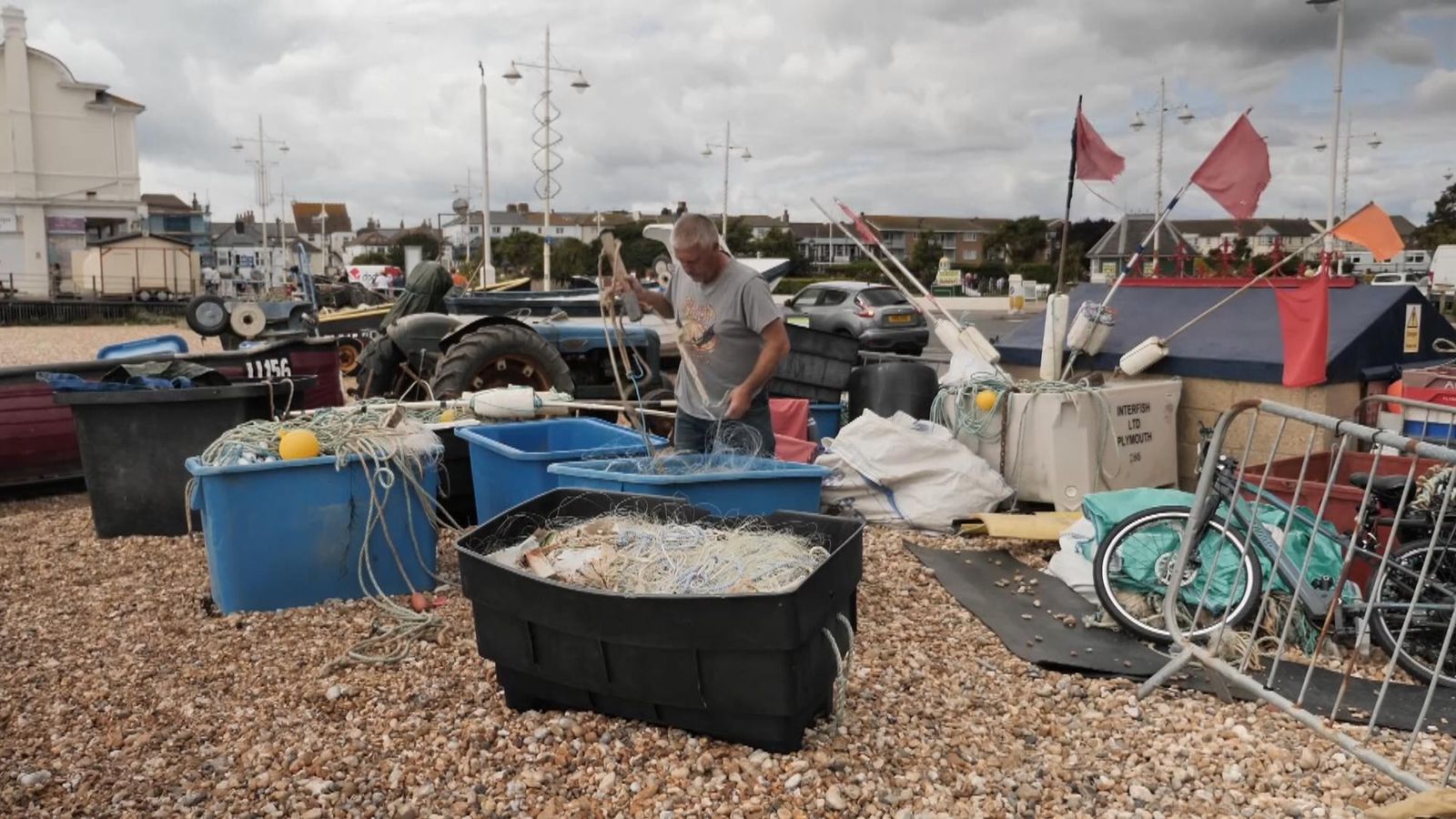Protected areas of sea around the UK still endure thousands of hours of the most damaging kinds of fishing every year, Sky News finds.
There are 91 Marine Conservation Zones (MCZs) around Britain which are designated for nationally important, rare or threatened habitats and species.
But data obtained by Global Fishing Watch shows that since January 2022 there has been over 90,000 hours of fishing in these waters, including 2,700 hours of dredging.
A dredger acts a little bit like a plough on the seabed, catching mainly flatfish and scallops but destroying much of the surrounding habitat in the process. Many conservation groups would like to see it outlawed, especially in protected areas.
Clive Mills, a fisherman and diver based in Bognor Regis, said: “If you saw a farmer doing something wrong on a field, you could video that and report it within hours. Out there, you don’t know what’s going on underneath the sea, but it’s going to be worse.”
But the irony is that much of this dredge fishing is actually legal. There are so few rules and so little enforcement that these protected areas have been described as merely paper parks, just lines on a map, not helping the sea life that lives there.
Henri Brocklebank, from Sussex Wildlife Trust, says many species need that safe haven.
“We’re in a situation where we’ve lost 99% of our angel sharks in the UK, 95% of basking sharks, 85% seagrass. Here in Sussex, we’ve lost 96% of our kelp. We need to actually start turning this around before it’s too late.”
The answer doesn’t have to be an end to all fishing. Sky News caught up with Mr Mills as he was mending his lobster pots and nets on the beach on a day too rough to launch. His method uses static gear with very little collateral damage.
“The nets sit there and the fish swim into them. But the impact on the seabed is so minimal… it recovers within hours,” he said.
Sky News asked the government why dredging was still allowed in places they have acknowledged as deserving protection. Their statement didn’t address that but they said: “We aim to have all Marine Protected Areas protected from damaging fishing activity by 2024… additionally, we recently designated the first Highly Protected Marine Areas.”







